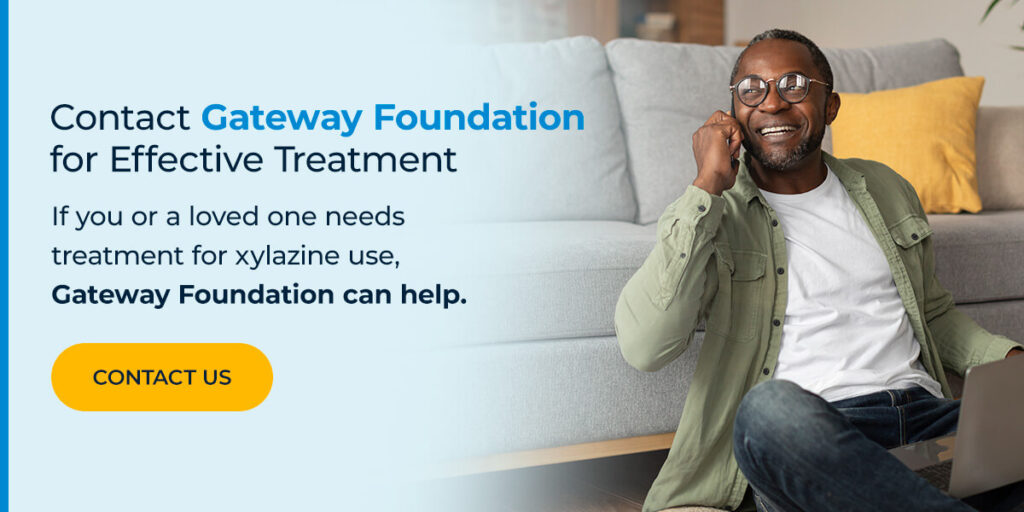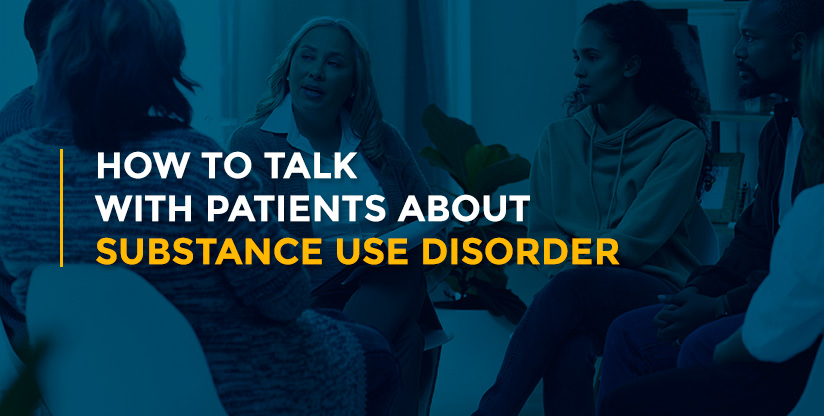Xylazine is among the most dangerous illicit drugs circulating in Illinois and the United States, and the number of xylazine-associated deaths is growing. This potent substance is naloxone-resistant, increasing the […] The post What Is Xylazine, and Why Is...
Xylazine is among the most dangerous illicit drugs circulating in Illinois and the United States, and the number of xylazine-associated deaths is growing. This potent substance is naloxone-resistant, increasing the risk of overdose deaths. An opioid and xylazine combination is known as tranq, and sellers distribute it because it’s more potent and costs less than other illegal and nonprescription drugs.
Immediate medical care is crucial when an individual overdoses on opioids and xylazine because cardiovascular and respiratory support can save an individual’s life. The right treatment program can help individuals recover from substance use and prevent xylazine-related health complications and death.
Why Xylazine Use Is Growing in Chicago
Xylazine is a growing public health threat in Chicago and across the United States. It’s a harmful substance that dealers often mix with other drugs, increasing their potency and health risks. Consider the following information to learn more about xylazine.
What Is Xylazine?
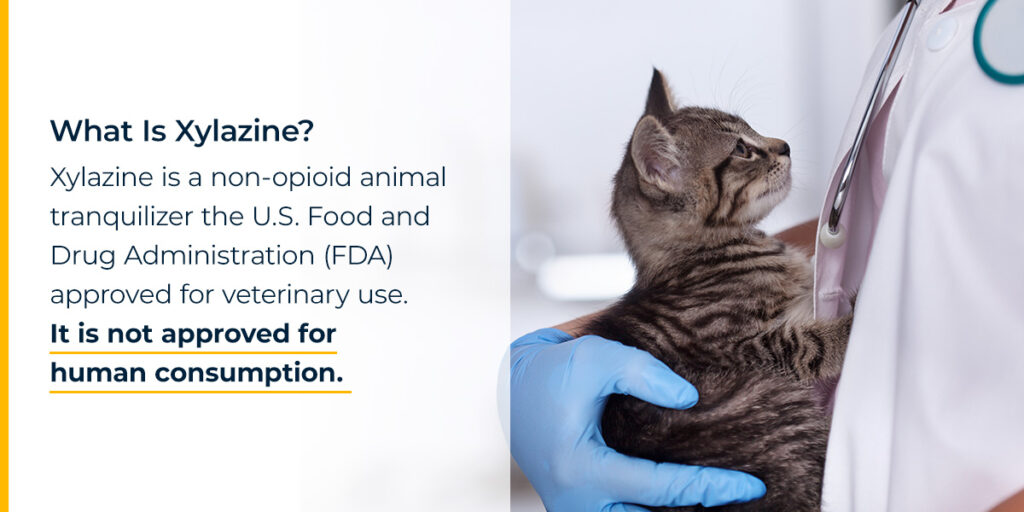
Xylazine is a non-opioid animal tranquilizer the U.S. Food and Drug Administration (FDA) approved for veterinary use. It is not approved for human consumption, but some individuals use it to feel effects similar to those elicited by substances like misused prescription and illegal drugs.
Xylazine’s Increased Use in Chicago
Xylazine use is a growing trend in Cook County, Illinois. The Cook County Health Department and Medical Examiner’s Office studied substance-related deaths between 2017 and 2021 to track the growth of xylazine use. The analysis recorded each of Cook County’s unintentional or undetermined substance-related deaths that tested positive for xylazine serum. Forensic analysts also conducted routine postmortem toxicology tests for other substances such as cocaine, fentanyl, fentanyl analogs, and naloxone.
The Centers for Disease Control and Prevention (CDC) reviewed Cook County’s analysis of xylazine-related overdose deaths to ensure it was consistent with CDC policies and federal laws. Cook County reported that a total of 210 people died from xylazine-related overdoses during the analysis period. The study revealed that xylazine-related deaths gradually increased between 2017 and 2021, and they peaked at the end of the study in October 2021.
The percentage of deaths involving fentanyl and xylazine reached 12.2% by 2021. Forensic analysts found fentanyl or fentanyl analogs in 99.1% of xylazine-related deaths, revealing that most people who died from xylazine use had taken a mixture of xylazine and fentanyl. Analysts also detected the following substances in the xylazine-associated deaths:
Why Is Xylazine Use Growing in Chicago?
Xylazine is involved in Illinois’ increasing overdoses and health complications because it is a large part of the illicit drug supply. Drug trafficking operations distribute a growing amount of fentanyl and xylazine due to the substances’ potencies and low costs. In some cases, people use xylazine to induce sleep during drug-facilitated crimes.
What Is Tranq?
Tranq is a slang term for a xylazine and opioid mixture that typically contains fentanyl. The U.S. Drug Enforcement Administration (DEA) has found fentanyl and xylazine mixtures in 48 of the country’s 50 states, making it a widespread challenge. Illicit drug distributors often add xylazine to other drugs, such as benzodiazepines, cocaine, and methamphetamine, but fentanyl is the most common opioid in this mixture.
Dealers typically mix xylazine with fentanyl because both substances are cheaper and stronger than others. Individuals who develop addictions to opioids such as heroin or morphine gradually build tolerance and seek stronger drugs such as tranq to feel the same effects. Some individuals may use tranq unknowingly if they believe a drug contains only opioids, and some people intentionally use tranq because xylazine can extend an opioid’s euphoric effects.
Dealers can increase their profits by selling cheaper, more potent substances such as xylazine and fentanyl, and they typically lack concern for how it may affect the individuals consuming the drugs. Individuals use tranq for its sedation effects, but it also causes severe health risks and complications.
The Dangers of Consuming Xylazine
Xylazine is harmful because it causes the following effects:
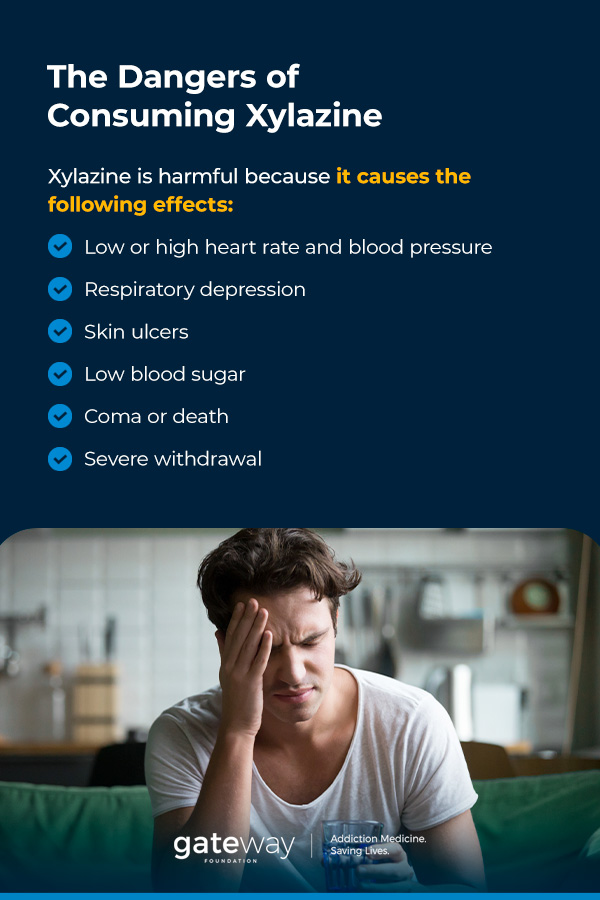
The Risks of Using Xylazine With an Opioid
Using xylazine or opioids individually is dangerous, and combining them increases the risk of health complications and death. Professionals refer to the simultaneous use of multiple drugs as polysubstance use. It’s a significant public health concern because it can enhance and lengthen each drug’s effects. The DEA previously considered fentanyl the country’s deadliest drug threat, and lacing it with xylazine makes it even more fatal.
Mixing opioids with xylazine is dangerous because xylazine does not respond to overdose medications like opioids do. A life-saving medication such as naloxone can reverse the effect of opioids such as fentanyl and heroin, but it cannot reverse the effect of xylazine.
Despite its ineffectiveness in reversing xylazine’s effects, you should still administer naloxone if you encounter someone experiencing an overdose because there might also be opioids in their system. For example, if a person consumes fentanyl and xylazine, naloxone can reverse the effects of the fentanyl in their system and increase their chances of survival with medical treatment.
Signs of a Xylazine and Opioid Overdose
A person can overdose on xylazine, opioids, or both. Understanding common overdose signs can help you respond when necessary and potentially save a life. An individual may be experiencing an overdose if you notice the following signs:
Efforts to Reduce Xylazine and Opioid Use
Illinois continuously works toward reducing xylazine and opioid use and the harm each causes. The state and city implemented the following efforts to help decrease xylazine use and overdose deaths:
The U.S. government also works toward reducing xylazine-related deaths. The White House’s Office of National Drug Control Policy considers xylazine and fentanyl mixtures an emerging threat because they significantly affect the country’s opioid crisis.
In July 2023, the U.S. government formed a National Response Plan to help mitigate the threat of xylazine and fentanyl mixtures. This plan emphasizes efforts such as testing, data collection, evidence-based prevention, treatment, and supply reduction.
What to Do if Someone Uses Xylazine With an Opioid
Learning important overdose response measures can help you react quickly in an emergency. If you suspect someone has overdosed on xylazine, opioids or both, you can help them with the following steps:
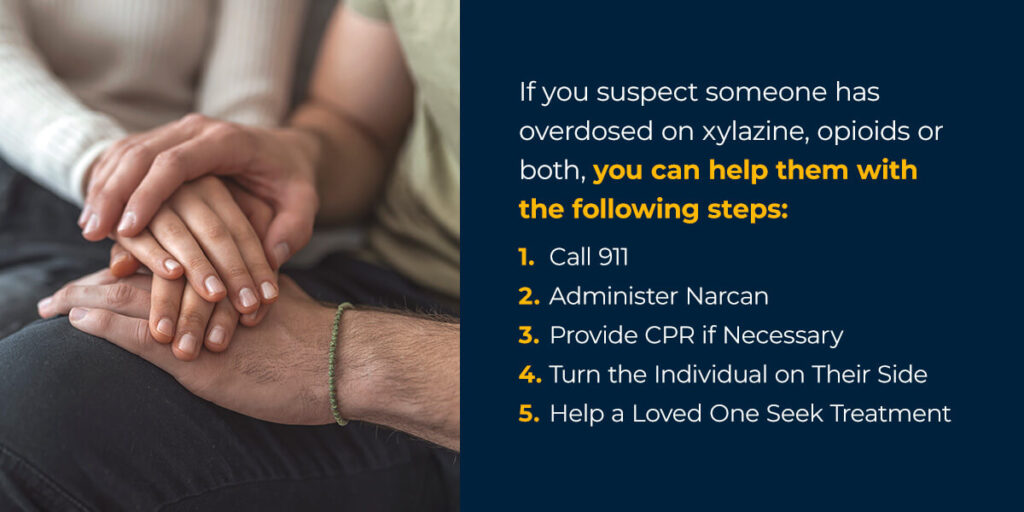
1. Call 911
Calling for emergency response services is crucial when an overdose occurs because medical treatment is necessary. Individuals require respiratory and cardiovascular support to manage xylazine toxicity, so medical response is essential.
Provide emergency responders with the individual’s location and explain their symptoms and any substances they may have taken. A 911 operator may stay on the phone with you and provide instructions until help arrives.
2. Administer Narcan
Narcan is an over-the-counter brand of naloxone that can help reverse opioid effects in an individual’s system. While it cannot reverse xylazine’s effects, it is safe to use on someone with xylazine in their system. You should use Narcan when you suspect any type of overdose.
3. Provide CPR if Necessary
If an individual loses consciousness or stops breathing after using xylazine and opioids, administer cardiopulmonary resuscitation (CPR) until help arrives. CPR can help prevent cardiac arrest, reduce negative outcomes, and keep an individual alive until emergency responders arrive. You can provide CPR with the following steps:
4. Turn the Individual on Their Side
Ensure the individual’s airway is clear, and turn them on their side if they don’t require CPR. Turning them on their side prevents choking if they vomit.
5. Help a Loved One Seek Treatment
Helping a loved one seek treatment following an overdose is essential. People experience intense withdrawal symptoms following substance use, which causes them to continue seeking and using more drugs. The proper treatment can help them manage withdrawal symptoms safely, learn healthy coping skills, recover from substance use disorder, and transform their life to maintain sobriety.
How to Help a Loved One Recover From Substance Use
Treatment is crucial for an individual who has a substance use disorder. You can help a loved one seek treatment with compassion, support, and helpful resources. Consider the following tips to support a loved one experiencing a substance use disorder:
Use a Compassionate Approach
Avoid accusations or a judgmental tone because these can push an individual farther away and discourage them from seeking treatment. Instead, approach your loved one with empathy and compassion. Let them know that you are worried about them and want to help.
Perform an Intervention
An intervention with your loved one’s closest friends and family members can help them recognize they need help. Plan an intervention where everyone can share openly and honestly to help your loved one see why their habits are harmful and dangerous. Inviting a professional counselor or interventionist can help maintain a constructive, helpful conversation.
Collect Helpful Resources
Navigating treatment options can feel overwhelming to someone experiencing a substance use disorder. You can offer support by providing helpful resources and helping them contact a quality treatment center. Research available treatment programs and communicate how they can help your friend or family member.
Encourage your loved one with a positive outlook and help them look forward to a new, healthy life. Offer to sit with them while they call a treatment center and speak with a compassionate professional about how to get started.
Offer Continued Support Throughout the Recovery process
Individuals need support during recovery. Visit your loved one when appropriate, and attend family therapy if recovery specialists recommend it. A family therapy program helps family members learn how to support their loved ones in recovery and help them meet their goals. It also helps family members process their feelings and heal as a loved one recovers from substance use.
Contact Gateway Foundation for Effective Treatment
Xylazine increases the opioid epidemic’s risks and harmful effects. Whether intentional or unintentional, consuming xylazine with fentanyl or another opioid can significantly harm the body. These potent substances can slow a person’s breathing until they enter a comatose state, incur permanent brain damage, or pass away.
Substance use treatment can help individuals escape the detrimental addiction cycle and start a new, joyful life. With the right treatment, people can manage withdrawal symptoms, heal, maintain sobriety, and protect themselves from illicit drugs such as xylazine.
If you or a loved one needs treatment for xylazine use, Gateway Foundation can help. Gateway Foundation offers inpatient, outpatient, and aftercare addiction treatment to help people heal physically, emotionally, and mentally. We offer personalized treatment tailored to each individual’s needs, and we can work with you to create the most beneficial treatment plan. Our recovery professionals understand how to address all aspects of substance use and co-occurring conditions.
When you recover at Gateway, you can receive medical care from compassionate staff, individual counseling with a therapist, and group therapy with an excellent support system. We also support individuals with services such as 12-step facilitation, cognitive behavioral therapy (CBT), motivational interviewing, family support, and recreational activities. Submit an online form to learn how we can help you or a loved one begin the path to recovery and return to a happy, healthy life.
The post What Is Xylazine, and Why Is Its Use Growing in Chicago? appeared first on Gateway Foundation.



